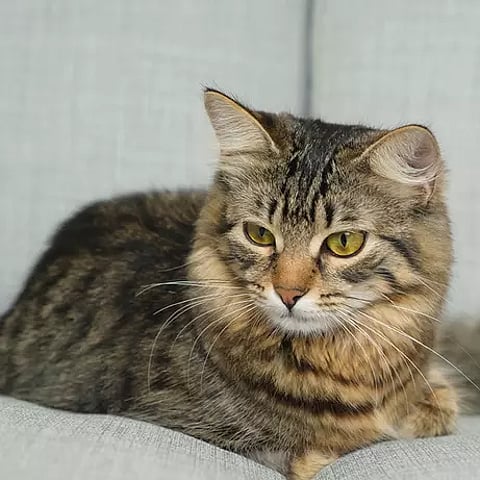

What is the meaning of a cat’s meow that grows louder and louder? Or your pet’s sudden flip from softly purring as you stroke its back to biting your hand? It turns out these misunderstood moments with your cat may be more common than not. A new study by French researchers, published last month in the journal Applied Animal Behaviour Science, found that people were significantly worse at reading the cues of an unhappy cat (nearly one third got it wrong) than those of a contented cat (closer to 10 percent).
The study also suggested that a cat’s meows and other vocalisations are greatly misinterpreted and that people should consider both vocal and visual cues to try to determine what’s going on with their pets. The researchers drew these findings from the answers of 630 online participants; respondents were volunteers recruited through advertisements on social media. Each watched 24 videos of differing cat behaviors. One third depicted only vocal communication, another third just visual cues, and the remainder involved both.
“Some studies have focused on how humans understand cat vocalisations,” said Charlotte de Mouzon, lead author of the study and a cat behavior expert at the Université Paris Nanterre. “Other studies studied how people understand cats’ visual cues. But studying both has never before been studied in human-cat communication.”
Cats display a wide range of visual signals: tails swishing side to side, or raised high in the air; rubbing and curling around our legs; crouching; flattening ears or widening eyes. Their vocals can range from seductive to threatening: meowing, purring, growling, hissing and caterwauling. At last count, kittens were known to use nine different forms of vocalisation, while adult cats uttered 16. That we could better understand what a cat wants by using visual and vocal cues may seem obvious. But we know far less than we think we do.
“We often take for granted our ability to understand the people and the animals that we’re close to, and that we live with,” said Monique Udell, director of the Human-Animal Interaction Laboratory at Oregon State University, who was not involved in this study. “It’s worth doing these investigations because it’s showing us that we’re not always accurate, and it helps us understand where our blind spots are, that we really do benefit from having multiple sources of information.”
And the fact that we’re not very good at picking up on signs of animal discontentment should not come as a surprise, Dr. Udell suggested. “We’re more likely to perceive our animals as experiencing positive emotions because we want them to,” she said. “When we see the animals, it makes us feel good, and our positive emotional state in response to the animals gives us these rose-coloured glasses.”
Even some of the most common cues may be misunderstood. Purring, for example, is not always a sign of comfort. “Purring can be exhibited in uncomfortable or stressful conditions,” Dr. de Mouzon said. “When a cat is stressed, or even hurt, they will sometimes purr.” Such instances are a form of “self-soothing,” said Kristyn Vitale, an assistant professor of animal health and behavior at Unity Environmental University in Maine.